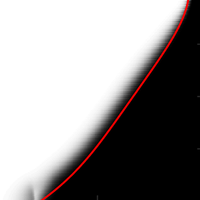当前位置:
X-MOL 学术
›
Phys. Rev. Fluids
›
论文详情
Our official English website, www.x-mol.net, welcomes your feedback! (Note: you will need to create a separate account there.)
Efficient autocatalytic reactive mixing and solitary chemical waves in laminar flows
Physical Review Fluids ( IF 2.7 ) Pub Date : 2020-06-24 , DOI: 10.1103/physrevfluids.5.063201 Thomas D. Nevins , Daniel E. Troyetsky , Douglas H. Kelley
Physical Review Fluids ( IF 2.7 ) Pub Date : 2020-06-24 , DOI: 10.1103/physrevfluids.5.063201 Thomas D. Nevins , Daniel E. Troyetsky , Douglas H. Kelley

|
Reactive mixing, in which fluid flow affects the dynamics of a chemical or biological process by continually altering local concentrations, is common in industrial systems. Often a key design goal is to generate reaction products as quickly as possible while expending minimal energy to drive the flow. In systems like microfluidic devices, where turbulence is inaccessible, efficient reactive mixing requires choosing flows carefully. Here we compare product generation rates of an autocatalytic reaction in a collection of steady, laminar shear flows, all with the same kinetic energy, to each other and to the case of reaction without flow. The resulting advection-reaction-diffusion dynamics are estimated by tracking reaction fronts using the computationally inexpensive eikonal approximation, then simulated directly; the two approaches agree closely. Prior studies noted that reaction fronts in Poiseuille flow converged over time to steady shapes that advance at constant speed (solitary chemical waves), and we find the same phenomenon in all the flows considered. Observing that solitary waves advance at speeds dependent on flow velocity extrema, we construct an analytic model that accurately predicts their shape and speed from the flow velocity profile and chemical front speed. The model implies that concentrating kinetic energy in a narrow region maximizes product generation, and we validate that prediction with further simulations. We show that in the case of solitary waves with speed zero, the model reproduces prior theoretical, experimental, and numerical studies of frozen fronts. By simulating full advection-reaction-diffusion dynamics, we find that the eikonal approximation predicts the size of the reacted region within a few percent and predicts the converged product generation rate within a few tenths of a percent.
中文翻译:

层流中高效的自催化反应混合和孤化学波
反应混合在工业系统中很常见,在反应混合中,流体的流动通过不断改变局部浓度来影响化学或生物过程的动力学。通常的关键设计目标是在消耗最少能量以驱动流的同时,尽快生成反应产物。在微流体设备等无法获得湍流的系统中,有效的反应混合需要仔细选择流量。在这里,我们比较了在具有相同动能的稳定,层流剪切流中,彼此之间以及在没有流动的情况下,自催化反应的产物生成速率。通过使用计算上廉价的电子近似值跟踪反应前沿,可以估算对流-反应-扩散动力学,然后直接进行模拟;两种方法非常吻合。先前的研究指出,泊瓦伊耶流的反应前沿随时间会收敛到以恒定速度前进的稳定形状(孤立化学波),我们在所有考虑的流中都发现了相同的现象。观察到孤立波以取决于流速极值的速度前进,我们构建了一个解析模型,该模型可以根据流速分布和化学前沿速度准确预测其形状和速度。该模型表明,将动能集中在一个狭窄的区域内可以最大程度地提高产品生成量,我们将通过进一步的仿真来验证这一预测。我们表明,在零速孤波的情况下,该模型重现了冻结前沿的先前理论,实验和数值研究。通过模拟完整的对流反应扩散动力学,
更新日期:2020-06-24
中文翻译:

层流中高效的自催化反应混合和孤化学波
反应混合在工业系统中很常见,在反应混合中,流体的流动通过不断改变局部浓度来影响化学或生物过程的动力学。通常的关键设计目标是在消耗最少能量以驱动流的同时,尽快生成反应产物。在微流体设备等无法获得湍流的系统中,有效的反应混合需要仔细选择流量。在这里,我们比较了在具有相同动能的稳定,层流剪切流中,彼此之间以及在没有流动的情况下,自催化反应的产物生成速率。通过使用计算上廉价的电子近似值跟踪反应前沿,可以估算对流-反应-扩散动力学,然后直接进行模拟;两种方法非常吻合。先前的研究指出,泊瓦伊耶流的反应前沿随时间会收敛到以恒定速度前进的稳定形状(孤立化学波),我们在所有考虑的流中都发现了相同的现象。观察到孤立波以取决于流速极值的速度前进,我们构建了一个解析模型,该模型可以根据流速分布和化学前沿速度准确预测其形状和速度。该模型表明,将动能集中在一个狭窄的区域内可以最大程度地提高产品生成量,我们将通过进一步的仿真来验证这一预测。我们表明,在零速孤波的情况下,该模型重现了冻结前沿的先前理论,实验和数值研究。通过模拟完整的对流反应扩散动力学,



























 京公网安备 11010802027423号
京公网安备 11010802027423号